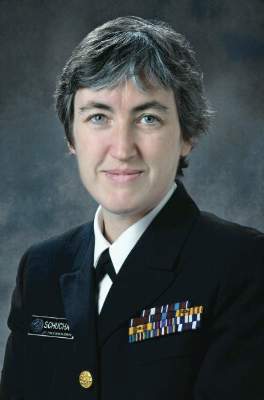The immunogenicity and efficacy of the recently approved 9-valent human papillomavirus vaccine were similar to that of the currently approved and recommended quadrivalent HPV vaccine, in an international study of over 14,000 women.
The study, published in the New England Journal of Medicine on Feb. 19, was the basis of the approval of the 9-valent vaccine in December 2014. The quadrivalent HPV vaccine is marketed as Gardasil and the 9-valent vaccine will be marketed as Gardasil-9.
The 9-valent vaccine covers the four HPV types (6, 11, 16, and 18) included in the quadrivalent vaccine; HPV-16 and HPV-18 are associated with about 70% of cervical cancers. The 9-valent vaccine, which includes five other oncogenic HPV types (31, 33, 45, 52, and 58), “offers the potential to increase overall prevention of cervical cancer ... to approximately 90%,” Dr. E. A. Joura of the department of gynecology and obstetrics at the Medical University of Vienna and associates said (N. Engl. J. Med. 2015;372:711-23 [doi:10.1056/NEJMoa1405044]).
In the Broad Spectrum HPV Vaccine Study, 14,215 women were randomized to receive the three recommended doses of the quadrivalent HPV vaccine or the 9-valent HPV vaccine and were followed with tests that included Pap tests, and swabs of labial, vulvar, perineal, perianal, endocervical, and ectocervical tissue at baseline and periodically up to 4.5 years. Antibody responses to HPV types 6, 11, 16, and 18 (the types included in both vaccines) were similar in the two groups.
In both groups, the rate of high-grade cervical, vulvar, or vaginal disease associated with HPV types in the vaccines and those not in the vaccines was 14 cases per 1,000 person-years. In a subgroup of patients not infected with HPV at baseline, rates were 2.4% among those who received the 9-valent vaccine vs. 4.2% of those who received the quadrivalent vaccine.
The rate of high-grade cervical, vulvar, or vaginal disease associated with the five additional HPV types included in the 9-valent disease was 0.1 cases per 1,000 person-years, compared with 1.6 cases per 1,000 person-years among those who received the quadrivalent vaccine, a 97% reduced risk associated with the new vaccine.
As anticipated, injection-site reactions were more common among those who received the 9-valent vaccine (91% vs. 85%); most cases were mild to moderate. Other adverse events included dizziness, reported in about 3% in both groups.
The authors concluded that the study results showed that the 9-valent vaccine “prevented cervical, vulvar, and vaginal disease and persistent infection associated with HPV-31, 33, 45, 52, and 58,” and that the incidence of disease associated with HPV-6, 11, 16, and 18 were similar in the two groups. “The effect of vaccination on the burden of cancer remains to be determined,” they added.
The study was funded by Merck, manufacturer of the Gardasil vaccines. Dr. Joura disclosed having received advisory board and lecture fees from Merck and Sanofi Pasteur MSD, and grant support from Merck and GlaxoSmithKline. Other author disclosures included ties to Merck, GlaxoSmithKline, Gen-Probe Hologic, Becton Dickinson, and others. Other authors are Merck employees.
The CDC’s Advisory Committee on Immunization Practices (ACIP) is scheduled to vote on proposed recommendations regarding the use of the 9-valent vaccine at a meeting on Feb. 26.



